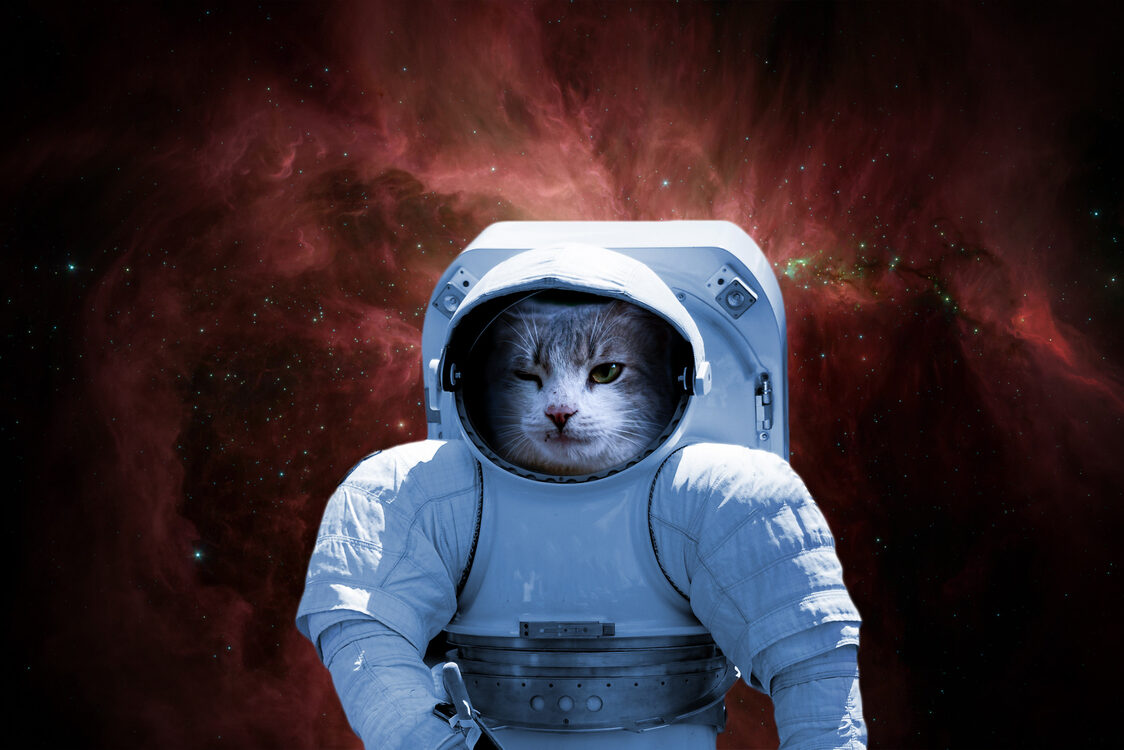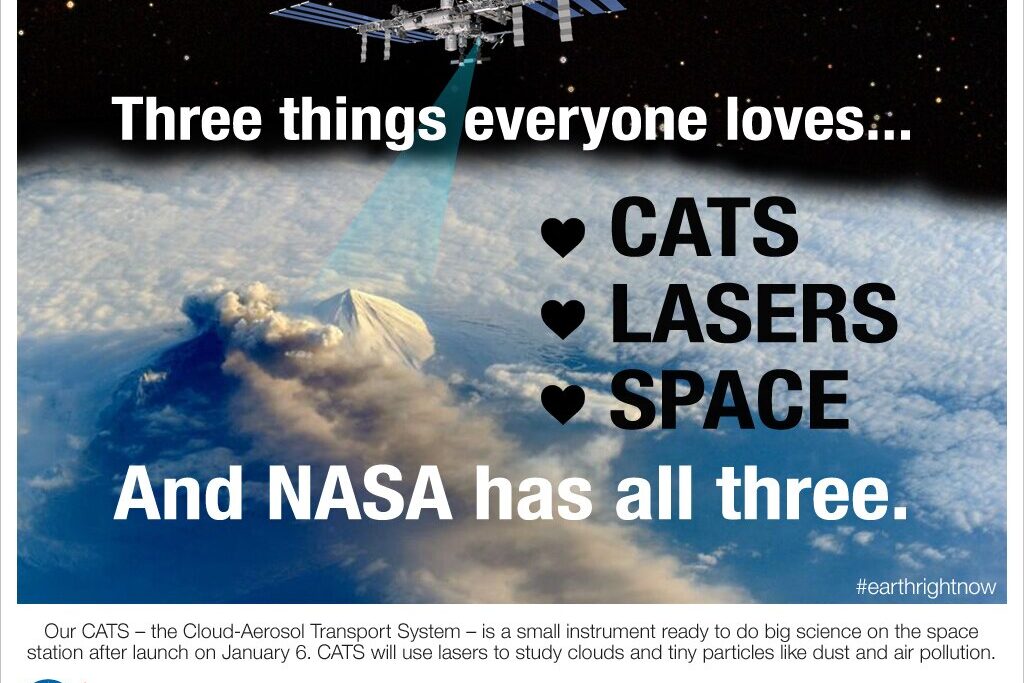1. The First Interplanetary Cat Video—And It’s Pawsitively Adorable

Move over, Earthly internet—cats have officially gone interplanetary! In a move that sounds like something straight out of a sci-fi fever dream, NASA recently beamed a cat video from a staggering 19 million miles away—yes, that’s nearly 80 times the distance from the Moon to Earth. Why? To test their Deep Space Optical Communications (DSOC) system, an advanced laser tech that could one day revolutionize space communication. But let’s be honest, they also probably wanted to prove that the internet’s obsession with cats transcends galaxies.
But this wasn’t just about giving space scientists their daily dose of feline cuteness. The experiment marked a major leap forward in laser communication, paving the way for ultra-fast data transfer between Earth and deep-space missions. And if we can successfully send a cat meme across millions of miles, just imagine the future possibilities—4K livestreams from Mars, real-time space vlogging, or astronauts FaceTiming their pets from another planet. This milestone proves that even as we venture further into the cosmos, we’ll always find ways to stay connected to the things we love—whether it’s family, friends, or, apparently, viral cat content.
2. This Wasn’t Just a Video—It Was a Galactic-Level Technological Feat

Sending a cat video across space sounds like a fun PR stunt, but the science behind it is mind-blowing. NASA’s DSOC system used an infrared laser to transmit data at higher speeds than traditional radio waves, allowing for crystal-clear footage to be sent across interstellar distances. Think of it as upgrading from a sluggish dial-up connection to fiber-optic internet, but for space. The laser had to be precisely aimed at a receiving station on Earth, which is like hitting a moving bullseye from millions of miles away—while both the sender and receiver are also moving at thousands of miles per hour. Any slight misalignment, and poof—the video would vanish into the void. The sheer precision required for this experiment showcases just how far human ingenuity has come in conquering the technical challenges of deep-space communication.
And yet, NASA scientists nailed it, proving that future space missions could communicate faster, clearer, and more efficiently than ever before. But here’s the real kicker—this test lays the groundwork for sending HD video from Mars and beyond, making long-duration space travel feel a lot less isolating. So next time astronauts are millions of miles away, they won’t just be sending grainy, delayed images—they might be streaming cat videos in real time like the rest of us. In a sense, this moment signifies more than just technological advancement—it’s a glimpse into a future where space isn’t just for exploration, but for seamless human connection.
3. The Signal Traveled at the Speed of Light—But It Still Took Over a Minute to Arrive

Light-speed communication sounds instantaneous, but when you’re dealing with distances measured in millions of miles, even light needs time to get there. The cat video zipped through space at 186,000 miles per second, yet it still took about 100 seconds to reach Earth. That’s over a minute and a half of suspense—which, in internet time, is practically an eternity. To put that in perspective, imagine texting your friend and getting a response a full minute later—not because they’re ignoring you, but because your message had to cross a cosmic distance equivalent to 80 trips to the Moon. Suddenly, that tiny delay on your Zoom call doesn’t seem so bad, does it? This lag may seem inconvenient, but in the grand scheme of space travel, it’s an incredible improvement over past communication methods.
But here’s why this matters: Future missions to Mars (and beyond) will rely on this kind of communication, and every second counts when dealing with space exploration. A system that can beam high-quality data faster and more reliably than radio waves is a game-changer. So while it might seem like a small step for cat videos, it’s a giant leap for humanity’s ability to stay connected in deep space. And let’s not forget—if we ever establish a colony on Mars, efficient communication will be crucial for not just survival, but maintaining a sense of community across the vastness of space.
4. NASA Scientists Chose a Cat Video for a Reason (And It’s Not Just Because They Love Cats)

Let’s be real—if NASA wanted to test their high-speed laser system, they could have chosen any video. A rocket launch, an astronaut floating in zero gravity, or even a simple “Hello, world” message. But they picked a cat video—and not just for the meme potential. The choice was strategic: cats are universally appealing, visually engaging, and instantly recognizable. A short clip of a playful tabby allowed NASA to test color accuracy, motion tracking, and compression efficiency, all while ensuring the video would capture attention. Plus, let’s not forget the psychological factor—even in the most high-stakes scientific environments, a little cat content brings joy. The fact that something as casual as a cat video was chosen for such a groundbreaking experiment makes it all the more charming and relatable.
And if history has taught us anything, it’s that cats always find a way to be at the center of technological revolutions. The first viral YouTube videos? Cats. Early internet forums? Flooded with cat gifs. Now, the first interplanetary laser transmission? Also a cat. At this point, it’s only a matter of time before we discover ancient feline hieroglyphics on Mars. The influence of cats on human culture—and now, space exploration—is undeniable.
5. This Experiment Opens the Door to a Future Where Space Feels Less Distant

While the idea of beaming a cat video across the cosmos is amusing, the implications are profound. This breakthrough means that one day, astronauts on Mars (or even further) could communicate with Earth seamlessly, with high-definition video, real-time conversations, and even live-streamed space exploration. Imagine watching a Mars sunset in 4K, getting real-time medical guidance from Earth, or astronauts sharing their daily lives without the crippling delays of current space communication. Space travel has long been associated with isolation, but this innovation could make it feel far more connected, interactive, and even social.
And if we ever do make contact with extraterrestrial life, wouldn’t it be hilarious if their first impression of humanity is a laser-transmitted cat video? Forget complex mathematical equations or diplomatic greetings—the universal language is, and always has been, cats. So the next time you’re scrolling through TikTok, just remember: A cat video has now traveled nearly 20 million miles through space. And if that’s not the most internet thing to ever happen, what is? Maybe one day, we’ll even have intergalactic pet influencers—Mars’ first viral feline, anyone?


